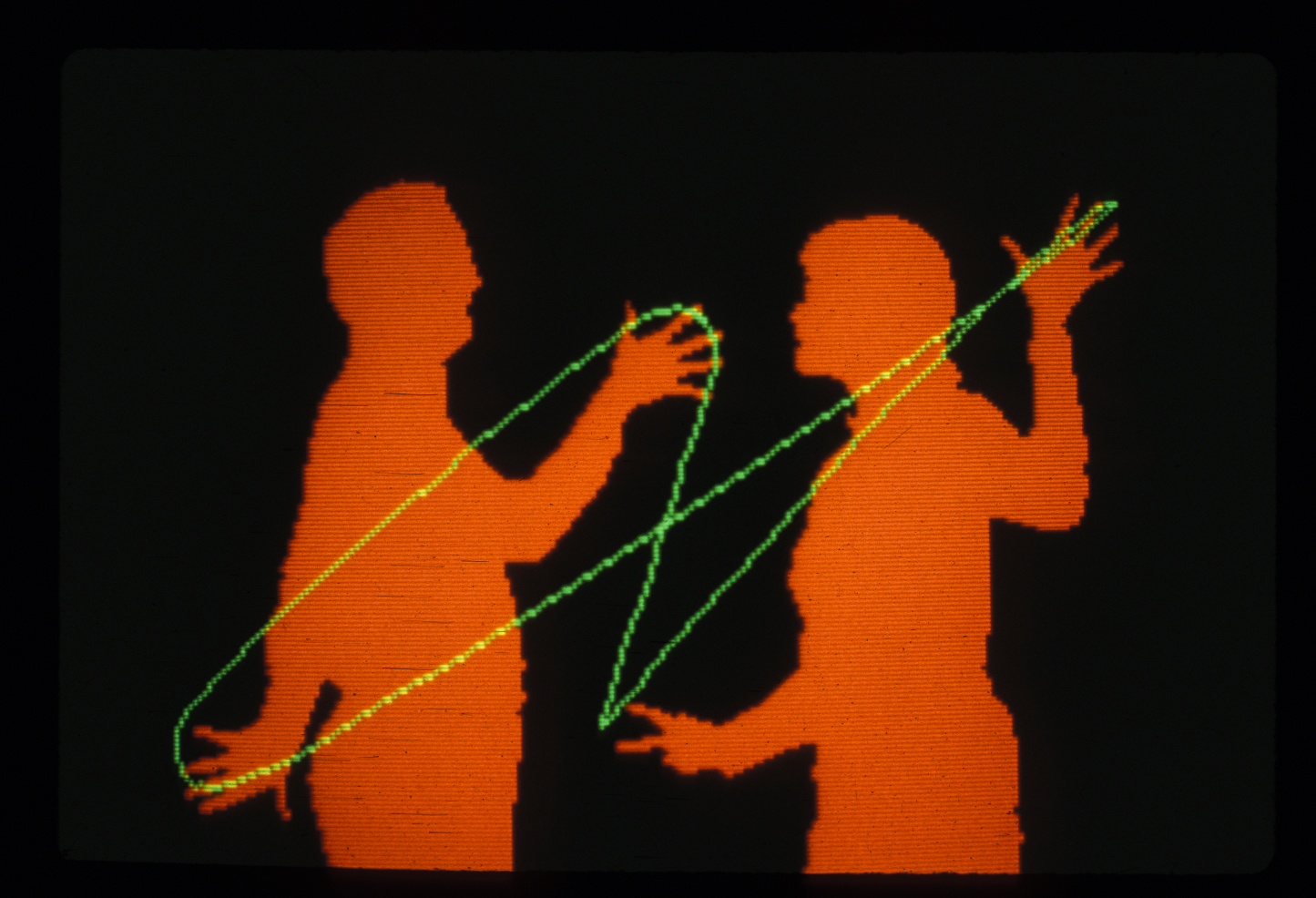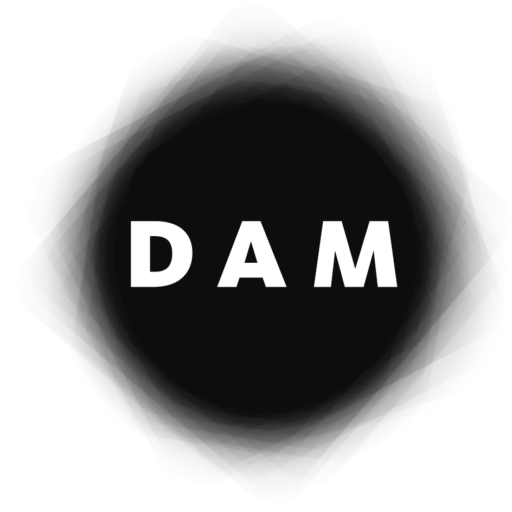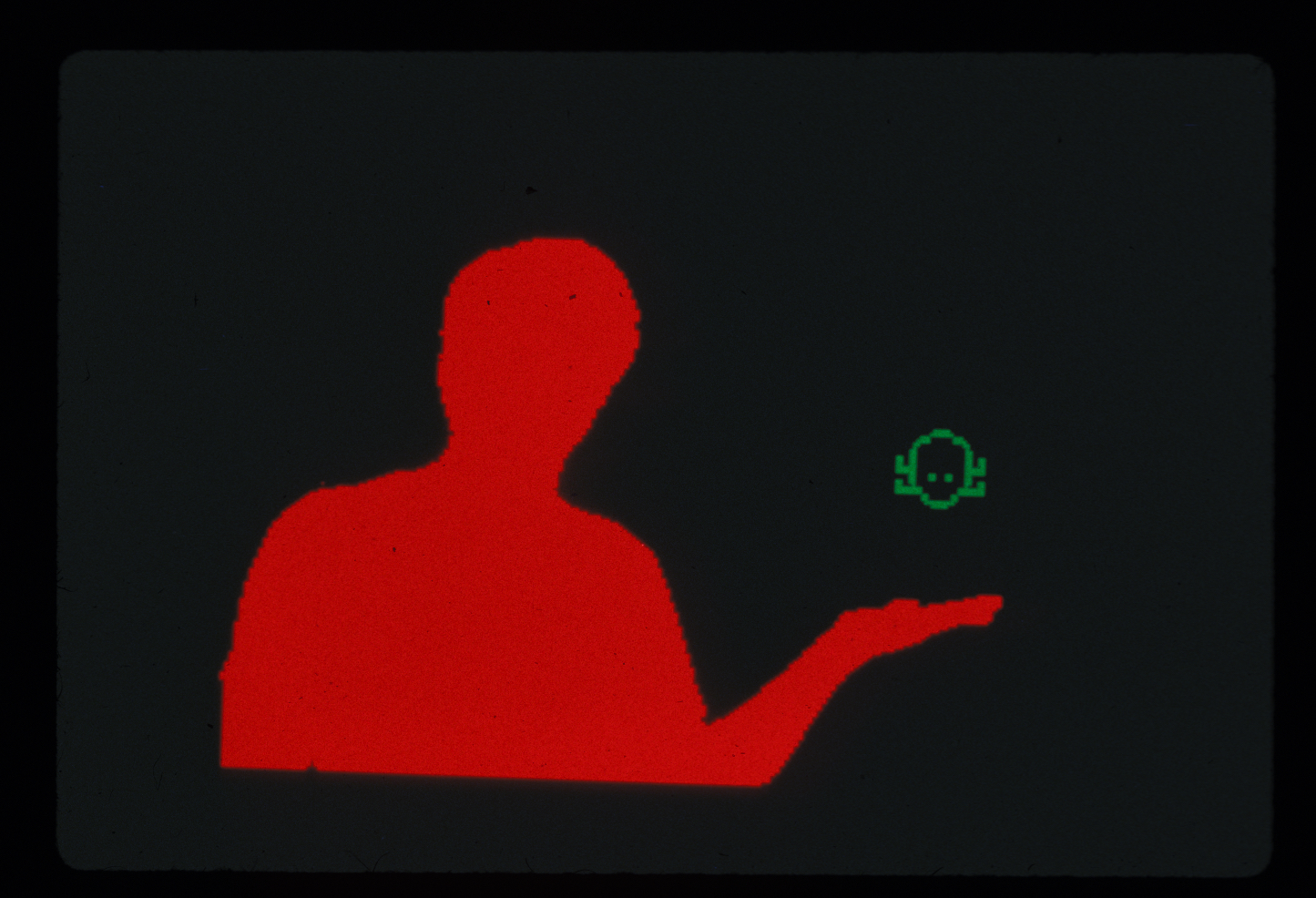
Myron Krueger is considered a pioneer of interactive art and virtual reality. His interactive installation Videoplace, developed between 1974 and the late 1990s, introduced a groundbreaking form of human-computer interaction that has been deeply influential in the evolution of interactive art. Krueger advocated for the creation of virtual environments that did not require headsets or gloves, and therefore his research also predates current developments in virtual and augmented reality.
More information:
About Myron Krueger

Gary, IN (USA), 1942
Myron Krueger studied liberal arts at the Dartmouth College in New Hampshire from 1962 to 1964, receiving a B.A. in Mathematics. Later on, he studied computer science at the University of Wisconsin from 1967 to 1974, where he obtained a M.S. and a PhD in “Computer-Controlled Responsive Environments.” While studying at the University of Wisconsin, he partnered with researchers Dan Sandin, Jerry Erdman, and Richard Venezky in the development of Glowflow (1969), an interactive environment comprising a darkened room equipped with sensors and tubes containing phosphorescent pigment. The sensors captured the movements of participants in the room and lit up the tubes or changed the sounds produced by a synthetizer. Krueger felt that the environment was only partly successful, because the participants could not identify which of their actions triggered a specific reaction. This experience led him to become an artist and further explore the possibilities of interactivity, seeking a more direct dialogue between viewer and artwork.
In his next project, Metaplay (1970), he focused on a “mirror-like” interaction, using a closed-circuit video feed. The installation consisted of two rooms: in one room, Krueger could see the participants on his screen and interact with them by drawing on a tablet; in the other room, participants saw themselves on a projection, next to the elements drawn by the artist. He would write words on the screen, play tic-tac-toe with the viewers, or follow their movements as they waved their arms to make it seem that they could draw with their gestures. The following year, he created Psychic Space (1971), an installation in which he no longer needs to take care of the interaction between the artwork and the participants. He covered the floor of a room with sensors that would activate a sound or musical note whenever someone stepped on them. This allowed participants to generate sounds and music by walking, jumping or running around the room. Later on, he added other forms of interaction, such as the repetition of the last sounds activated by the participant, or the display of a person’s location in the room as a dot inside a maze.
In 1974, Krueger started working on his most well-known and influential artistic project: Videoplace. This interactive installation consisted in two rooms in which participants found themselves in front of a video projection that displayed their silhouette and reacted in real time to their movements, allowing them to interact with virtual objects and the images of participants in a second room. Built upon the concepts and solutions developed in Glowflow and Metaplay, this installation finally achieves an intuitive form of interaction in which the participant can immediately see how her actions affect the virtual environment in front of her. The first installation of its kind, Videoplace has been vastly influential in the development of all sorts of interactive installations over the next four decades. It received funding from the National Endowment for the Arts and had a two-way exhibit at the Milwaukee Art Museum in 1975. From 1974 to 1978, Krueger carried out computer graphics research at the Space Science and Engineering Center of the University of Wisconsin–Madison as he continued developing Videoplace, and in 1978 he joined the computer science faculty at the University of Connecticut, where he taught courses in hardware, software, computer graphics and artificial intelligence, until 1985. Also, between 1980 and 1984, he was the director of the software company First System Corporation in Los Angeles.
Krueger’s dissertation was published in 1983 with the title Artificial Reality. The book presented innovative models of human-computer interaction, which included head-mounted displays, data gloves, and the technology created for Videoplace. The book was later reprinted under the title Artificial Reality II in 1991. Because of the innovative approach to interaction and his research outputs, Krueger is considered not only a pioneer of interactive art but also of virtual and augmented reality. He created at least twenty different versions of Videoplace over the years, exploring a wide spectrum of forms of interaction. The installation was widely exhibited in the United States and Canada, as well as in Japan, and was included in the SIGGRAPH Art Show in 1985 and 1990 and the SIGCHI (Computer-Human Interaction Conference) in 1985 and 1989. In 1990, Ars Electronica awarded it the first Golden Nica in Interactive Art, contributing to its popularity among artists working with interactive media, who have since used it as a blueprint for their own artistic projects. Krueger himself used the hardware from Videoplace to create another artwork, Small Planet (1993), which invites viewers to navigate a simulated Earth-like planet by extending their arms and moving them as if they were flying. This installation was shown at SIGGRAPH in 1993, Interaction (Ogaki, Japan) in 1997, and Mediartech (Florence, Italy) in 1998.


